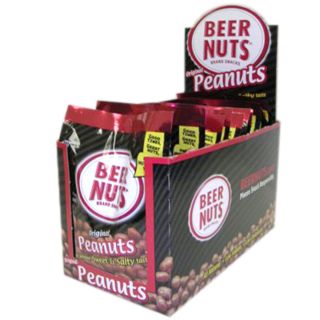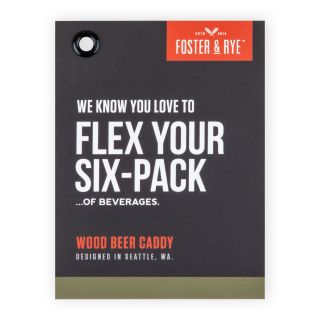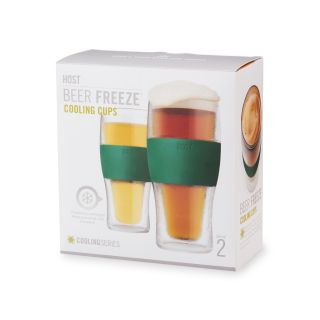Whether you’re new to the world of craft beer or a seasoned enthusiast, understanding key beer styles can greatly enhance your drinking experience. Beer comes in a dazzling variety of flavors, aromas, and appearances, shaped by centuries of brewing tradition and innovation. Knowing the fundamental styles not only helps you appreciate the complexity behind each pint but also guides you in choosing the perfect brew for any occasion. From crisp and refreshing to rich and robust, each style offers something unique to discover. In this guide, we’ll explore the top seven beer styles every savvy beer drinker should know, helping you navigate menus with confidence and deepen your appreciation for the art of beer. Cheers to expanding your palate!
Importance of Beer Styles and Why They Matter
Understanding beer styles is key to truly appreciating what’s in your glass. Every style blends ingredients and brewing methods. Whether it’s a crisp pilsner, a hoppy IPA, or a rich stout, knowing the differences helps you navigate the diverse world of beer with confidence.
Why Beer Styles Matter:
Brewers and Drinkers
For Brewers: Ensure consistency, quality, and innovation within clear boundaries.
For Drinkers: Offer a guide to flavor expectations and preferences.
Supports Creativity: Knowing the rules allows brewers to break them thoughtfully.
Simplifies Beer Selection: Drinkers can confidently explore new brews within preferred style categories.
Elevates the Tasting Experience
Help identify what flavors you enjoy.
Assist in making better food pairings and smarter choices at bars or breweries.
Encourages mindful sipping and flavor exploration.
Enhances social experiences through shared tasting knowledge.
Deep Appreciation for Craftsmanship
Show how small changes in ingredients or methods affect the final product.
Make beer tasting more thoughtful and engaging.
Promotes a better understanding of brewing science and techniques.
Build a Cultural Connection
Each style has roots in different regions and traditions.
Understanding styles connects you to brewing heritage and a global community of beer lovers.
Knowing your beer styles isn’t about being a snob—it’s about enjoying beer on a deeper level.
Builds a connection with cultural rituals and celebrations tied to beer.
Exploring the Top 7 Most Popular and Influential Beer Styles
Discover the seven most popular and influential beer styles that have shaped the craft beer world. These styles highlight a variety of tastes, brewing customs, and cultural relevance.
Lager – The Crisp Classic
Lagers are bottom-fermented beers, brewed at cooler temperatures using specific yeast strains. A smooth finish and a clean, crisp taste are the outcomes of this technique.
Key Characteristics
Appearance: Pale gold to amber, clear.
Aroma: Subtle malt sweetness, light hop presence.
Flavor: Clean, balanced malt and hop profile, refreshing finish.
Alcohol Content: Typically 4.5%–5.5% ABV.
Popular Substyles
Pilsner: A pale, highly carbonated lager with a distinct hop bitterness, known for its crispness and refreshing qualities.
Helles: A malt-forward lager with subtle hop bitterness, offering a smooth and balanced taste.
Bock: A rich, toasted lager that is maltier and stronger. Includes variations like maibock, doppelbock, and eisbock.
Food Pairings: Grilled meats, pretzels, and fried foods.
IPA (India Pale Ale) – The Hoppy Hero
IPAs are defined by strong hop flavors and aromas, ranging from citrusy and piney to flowery and fruity, which originate in the U.K. The style gained massive popularity in the U.S, leading to numerous substyles.
Key Characteristics
Appearance: Golden to amber, often hazy.
Aroma: Intense hop presence, with notes of pine, citrus, or tropical fruits.
Flavor: Bitter, hop-forward taste with varying malt sweetness.
Alcohol Content: Typically 5.5%–7.5% ABV.
Popular Substyles
West Coast IPA: Piney, resinous hop aromas and a strong bitterness characterize this clear beer.
New England IPA (NEIPA): Hazy, juicy, with a soft mouthfeel and tropical fruit-forward hop character.
Double/Imperial IPA: Higher alcohol content, with intensified hop flavors and malt sweetness.
Food Pairings: Spicy dishes, grilled meats, and blue cheese.
Pale Ale – The Balanced Brew
Pale ales are top-fermented beers with a well-balanced malt sweetness and hop bitterness, as they serve as a gateway for those exploring hoppier beers.
Key Characteristics
Appearance: Amber to copper.
Aroma: Mild to moderate hop aroma, with caramel malt notes.
Flavor: Balanced malt sweetness and hop bitterness.
Alcohol Content: Typically 4.5%–6.2% ABV.
Popular Substyles
American Pale Ale: A more hoppy variant with aromas of lemon and pine.
English Pale Ale: More malt-forward with earthy hop characteristics.
Food Pairings: Roasted chicken, burgers, and mild cheeses.
Stout – The Bold and Roasty
Rich, dark beers, stouts, are distinguished by their roasted malt characteristics, which may contain hints of caramel, chocolate, and coffee.
Key Characteristics
Appearance: Opaque black with a tan head.
Aroma: Roasted malt, coffee, chocolate.
Flavor: Rich, roasted bitterness with sweet malt undertones.
Alcohol Content: Typically 4%–6% ABV.
Popular Substyles
Dry Stout: Light-bodied with a dry finish.
Sweet Stout: Creamy, with added lactose for sweetness.
Imperial Stout: High alcohol content, with intense flavors and a full body.
Food Pairings: Oysters, chocolate desserts, and smoked meats.
Wheat Beer – The Refreshing Brew
A large amount of wheat is used in the brewing process to produce wheat beers, which have a refreshing, slightly fruity flavor and a hazy appearance.
Key Characteristics:
Appearance: Cloudy, pale yellow.
Aroma: Banana, clove, citrus.
Flavor: Light, refreshing, with fruity and spicy notes.
Alcohol Content: Typically 4%–5.5% ABV.
Popular Substyles
Hefeweizen: A wheat beer from Germany that tastes strongly of banana and clove.
Witbier: A wheat beer in the Belgian style, made with orange peel and coriander.
American Wheat Beer: Cleaner, less fruity, with a more pronounced hop character.
Food Pairings: Salads, seafood, and light cheeses.
Sour Beer – The Tart Twist
Sour beers offer unique tart and tangy flavors that stand apart from traditional beer styles. They undergo fermentation with wild yeast strains and bacteria, creating acidity and complex sour notes.
Key Characteristics
Appearance: Pale to deep amber, often cloudy.
Aroma: Fruity, funky, tart, sometimes like barnyard.
Flavor: Sharp, tangy, sour with varying fruitiness and funkiness.
Alcohol Content: Typically 4%–7% ABV, but can vary widely.
Popular Substyles
Berliner Weisse: A light-bodied, low-alcohol sour often served with flavored syrups to balance tartness.
Gose: A sour with added salt and coriander, giving it a distinctive savory and tart profile.
Lambic & Gueuze: Wild fermented and aged beers with complex, funky, and dry profiles.
Fruit Sours: Extra levels of flavor by brewing with fruits like raspberries or cherries.
Food Pairings: Goat cheese, salads with vinaigrette, spicy asian dishes, and shellfish.
Porter – The Smooth Dark Malt
Porters are a classic dark beer style that predates stouts and share many similarities, but are typically lighter-bodied and less intense. They combine rich malt flavors with smooth drinkability.
Key Characteristics
Appearance: Dark brown to black, often opaque.
Aroma: Roasted malt, chocolate, coffee, caramel.
Flavor: Mildly roasted with sweet malt undertones and subtle bitterness.
Alcohol Content: Typically 4.5%–6.5% ABV.
Popular Substyles
English Porter: Smooth and balanced with earthy and chocolate malt notes.
American Porter: Hoppier and sometimes more robust, with a wider variety of flavors including smoky or coffee notes.
Baltic Porter: A stronger, lagered porter with higher alcohol content and a smooth, rich malt profile.
Food Pairings: Grilled meats, barbecue, roasted vegetables, and chocolate desserts.
Check this comprehensive guide on beer industry trends for 2025: what to expect & how to prepare to explore emerging trends.
How to Taste and Appreciate Different Beer Styles
Tasting beer is more than just drinking it—it’s about experiencing the complex flavors, aromas, and textures that make each style unique. To truly appreciate different beer styles, approach tasting with intention and curiosity. Here’s how:
Looks
Observe the beer’s color, clarity, and head (foam).
Note if it’s pale, dark, clear, or hazy, and the foam’s texture and retention.
Smell
Swirl gently and inhale deeply to detect aromas.
Identify scents like citrus, pine, roasted coffee, spices, or tartness, depending on the style.
Taste
Let it coat your palate with a small sip.
Notice the balance of sweetness, bitterness, acidity, and unique flavor notes.
Assess the mouthfeel, noting if it is light, creamy, thick, or crisp.
Pay attention to the finish—whether the flavor lingers or ends crisp and clean.
Consider the Style
Compare your experience to the typical characteristics of the style (e.g., hoppiness in IPAs, tartness in sours).
Learn about the beer’s history and brewing techniques to better understand why it tastes the way it does.
Food Pairing
Match beer with dishes to enhance both flavors.
Light beers go well with salads and seafood. IPAs complement spicy foods, and stouts pair nicely with desserts and grilled meats.
Keep Exploring
Try new styles and breweries to expand your palate.
Embrace the diversity and creativity in the beer world.
By taking these steps, you’ll develop a deeper appreciation for the craft and complexity in every glass.
Tips for Exploring and Expanding Your Beer Palate
Expanding your beer palate is a fun and rewarding journey that opens up new flavors and styles you may never have experienced before. The following tips will help you along the way:
Try Variety Styles: Don’t stick to just one type—explore sours, barrel-aged beers, international brews, and more to discover new flavor profiles.
Take Your Time When Tasting: Focus on the aroma, mouthfeel, and finish of each beer to fully appreciate its complexity.
Note Flavor Balance: Pay attention to how bitterness, sweetness, and acidity interact in the beer.
Experiment with Food Pairings: Pair beers with different foods to see how flavors complement or contrast with each other.
Attend Tastings and Festivals: Join events and brewery tours to learn from experts and try unique beers.
Keep a Beer Journal: Record your impressions, preferences, and discoveries to track how your palate evolves.
Stay Open-Minded: Be willing to try unfamiliar beers—every new experience helps your palate grow.
Cheers to broadening your beer horizons and enjoying every sip!
Check this step-by-step guide on cleaning and maintaining your beer tap system to keep your pours fresh and flavorful.
Exploring the world of beer through its diverse styles not only enriches your drinking experience but also connects you to centuries of brewing tradition and innovation. By understanding key beer styles, learning how to taste with intention, and keeping an open mind to new flavors, you can confidently navigate the vast landscape of craft beer. Whether you prefer light and refreshing or dark and robust, each style offers unique stories and sensations to discover. So keep experimenting, savor each sip, and enjoy the journey of expanding your beer palate—cheers to becoming a truly savvy beer drinker!
Looking to take your beer tasting experience to the next level? BistroToRestro has you covered with top-quality essentials like beer growlers for freshness, classic bottle openers for convenience, and can sleeves to keep every sip perfectly chilled from top brands like Viski, Foster & Rye, and True. Find the perfect pairing for your favorite beer styles today!
FAQs
How can I identify the bitterness level of a beer?
The bitterness of a beer is measured in International Bitterness Units (IBUs). A higher IBU indicates a more bitter taste, commonly found in styles like IPAs. Conversely, beers with lower IBUs, such as wheat beers or jagers, tend to have a milder bitterness.
What is the significance of beer color and clarity?
Beer color and clarity hint at its flavor and brewing style—lighter beers are usually crisp and clean, while darker ones are rich and roasted. Hazy beers often have a fuller mouthfeel and fruity notes.
What is the most sold beer style?
Lager is the most sold beer style worldwide, known for its clean, crisp taste and easy drinkability. Its popularity spans across many countries and appeals to a wide range of beer drinkers.
What are the best beer styles to age?
Beer connoisseurs often point to the three “S's” of the types of beers to age: Strong, sour, and smoked. This is not a hard and fast rule, but it serves as a good starting place for consideration of what types of beer can benefit from the passage of time.










